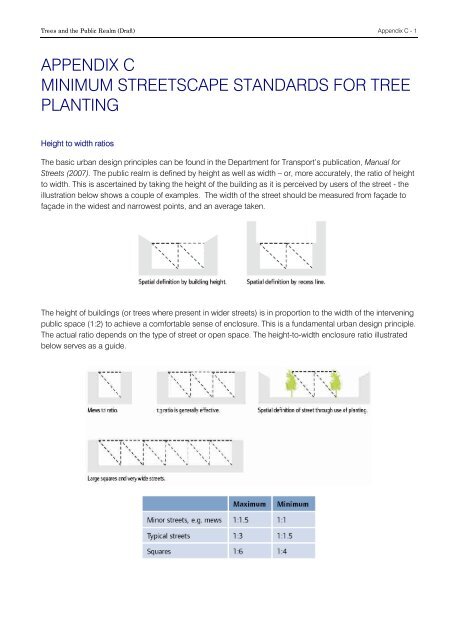Trees and the Public Realm - Westminster City Council
Trees and the Public Realm - Westminster City Council
Trees and the Public Realm - Westminster City Council
You also want an ePaper? Increase the reach of your titles
YUMPU automatically turns print PDFs into web optimized ePapers that Google loves.
<strong>Trees</strong> <strong>and</strong> <strong>the</strong> <strong>Public</strong> <strong>Realm</strong> (Draft) Appendix C - 1<br />
APPENDIX C<br />
MINIMUM STREETSCAPE STANDARDS FOR TREE<br />
PLANTING<br />
Height to width ratios<br />
The basic urban design principles can be found in <strong>the</strong> Department for Transport’s publication, Manual for<br />
Streets (2007). The public realm is defined by height as well as width – or, more accurately, <strong>the</strong> ratio of height<br />
to width. This is ascertained by taking <strong>the</strong> height of <strong>the</strong> building as it is perceived by users of <strong>the</strong> street - <strong>the</strong><br />
illustration below shows a couple of examples. The width of <strong>the</strong> street should be measured from façade to<br />
façade in <strong>the</strong> widest <strong>and</strong> narrowest points, <strong>and</strong> an average taken.<br />
The height of buildings (or trees where present in wider streets) is in proportion to <strong>the</strong> width of <strong>the</strong> intervening<br />
public space (1:2) to achieve a comfortable sense of enclosure. This is a fundamental urban design principle.<br />
The actual ratio depends on <strong>the</strong> type of street or open space. The height-to-width enclosure ratio illustrated<br />
below serves as a guide.

















